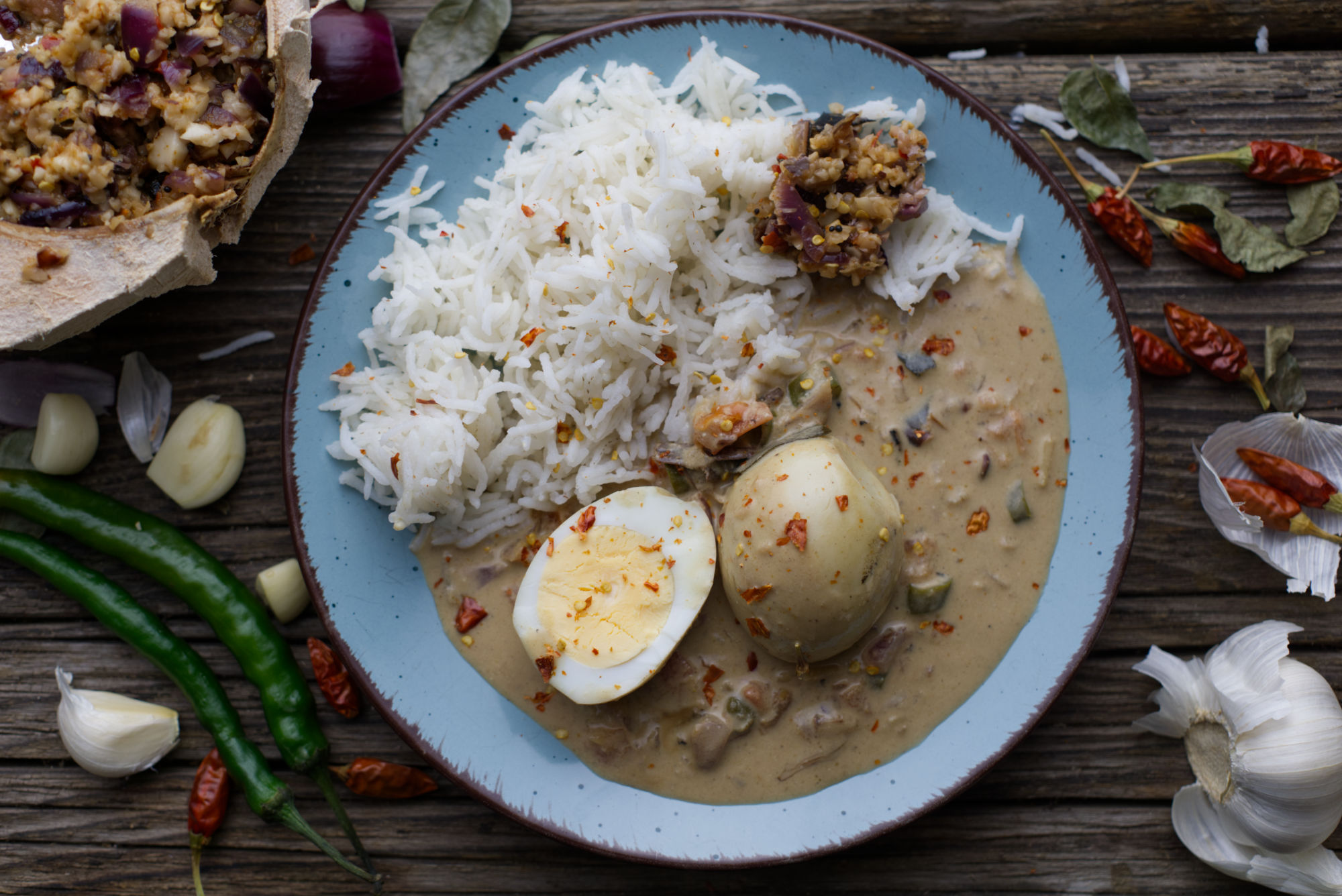Egg Curry from Sri Lanka
The egg curry from Sri Lanka is, like many other curries of the island nation, very simple to prepare. Important is the quality of the eggs, an organic quality is in my eyes here the basic requirement. In addition to the farming method, the taste and color of the egg yolk also plays an important role, the eye eats with, after all. In my recipe for the egg curry, only a handful of spices are used. There is no standout flavor, but each spice harmonizes with the others to create a flavorful blend.
The Maldives fish in the original recipe
In the original recipe from Sri Lanka, Maldives fish is also used. The Maldives fish is a dried tuna, which, as the name suggests, is produced in the Maldives and is often found in vegetable curries. However, I wanted a purely vegetarian dish, on the other hand, I was aware that this fish is difficult to find in many countries.
INGREDIENTS
6 hard boiled eggs (peeled)
250 ml coconut milk
2 tablespoons tamarind paste
100 ml water
1 tbs coconut oil
2 tsp curry powder
5 curry leaves
2 green chili peppers, chopped
2 red onions, diced
3 garlic cloves, finely chopped
1 cm ginger, finely chopped
2 cardamom pods, crushed
1 cm cinnamon stick (* Note)
1 tomato, diced
To taste:
Lime juice
Salt
First, mix water with tamarind paste and set aside. Then heat coconut oil in a pan and briefly fry the curry leaves, chili and curry powder in it. Now add onions, garlic and ginger. Simmer everything on low heat until the onions are translucent.
Add cardamom and cinnamon and simmer the spices for another three minutes. Then add tomato pieces and simmer until they soften. Pour in coconut milk and carefully add boiled eggs to the sauce.
Cover the pan and let the curry simmer on low for about 15 minutes. At the end, season curry with salt and lime juice. Serve the egg curry with rice, sambol (Like our Parsley Sambol)and fresh vegetables.
Note
If you don’t like the taste of cinnamon in food, like my wife for example, you should just omit the cinnamon in this recipe.
What do you think?
We are interested in your opinion. Have you tried this recipe? Let us know how you liked it. Make a comment, rate it or post your own photo with #lovefoodasia on Instagram. Thanks for your support!

